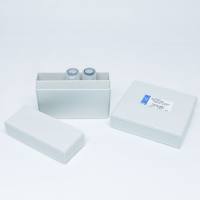Instrumentation, Accuracy, and Quality Control Issues in Development of Quantitative Fluorescence-Image Analysis (QFIA)
互联网
485
Many fundamental questions of biology reduce to a common technical problem, how to assess the phenotype of cells in relation to other cells or in relation to morphology. Traditionally, this problem has been approached by classical biochemical analysis, in which heterogeneous tissue is disrupted and proteins or nucleic acid are determined on the extracts. The hope is that if one particular cell type manifests the interesting biology, the overall change in the presence of other cells will be large enough to detect. Microdissection and application of techniques such as polymerase chain reaction (PCR) and reverse transcription-polymerase chain reaction (RT-PCR) have extended the biochemical approach for DNA and RNA to a few cells (1 ), although quantltation is not precise and the techniques are technically demanding. This approach is not useful for determining phenotypic properties relating to the amount of particular proteins in cells, and ultimately, the behavior of cells is established by their phenotype Flow cytometry has been used to quantify protein biomarkers in individual cells, but the method is limited by requiring large numbers of single cells. Further, it lacks the ability to correlate biochemical analysis with morphology (2 ).








